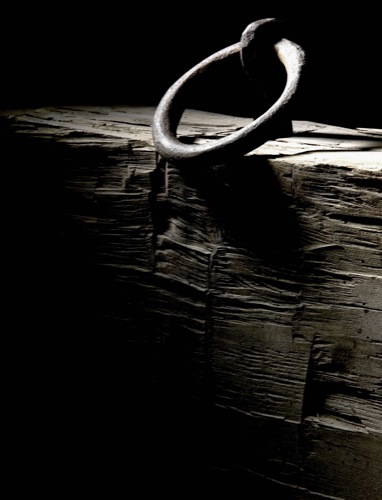
Courtesy Underground Railroad Freedom Center
The journey took place during the dark of night. Travelers covered hundreds of miles by foot, and every crunch of gravel, rustling branch and barking dog sent each terrified soul scrambling for cover. It was a harrowing journey no one would choose to take unless the person’s very right to freedom was at stake.
During the 19th century, an estimated 100,000 slaves took a journey like this, seeking freedom by way of the Underground Railroad, a network of people who helped African Americans escape slavery to freedom.
With this same incredible courage and tenacious spirit, African Americans have left indelible imprints on the history and culture of our country. Here are six special places to learn and experience them.
Cincinnati
[ Ohio ]
Cincinnati was a major hub along the Underground Railroad, so it is a fitting location for the Underground Railroad Freedom Center.
“It was here on the banks of the Ohio River, where the Freedom Center now sits, that many enslaved African Americans took their first steps on freedom’s shore,” said Paula Johnson, manager of volunteer services at the Underground Railroad Freedom Center. “For this reason, escaping slaves often referred to the Ohio as the River Jordan.”
The 158,000-square-foot center explores slavery in America and the struggle for freedom all over the world. The beautiful glass windows and flowing architecture make the building a piece of art itself, but inside, the center tells an emotional story.
Exhibits include the Slave Pen, a structure from a nearby property where slaves lived, and “Escape!” a short film narrated by Oprah Winfrey that tells the story of a slave’s journey and the people who helped her. An experiential theater, complete with mist and chirping crickets, helps the journey along the Underground Railroad come alive for viewers.
Harriet Beecher Stowe’s time in Cincinnati inspired her to write “Uncle Tom’s Cabin,” the popular anti-slavery novel that some say helped pave the way for the Civil War. At the Harriet Beecher Stowe House, visitors can learn more about the author and her family’s life and see personal objects.
www.freedomcenter.org
Harriet Tubman Underground Railroad Byway
[ Maryland ]
Born into slavery in Dorchester, Maryland, Harriet Tubman fled to the North only to return some 13 times to help lead slaves to freedom. Next year, the state will commemorate the 100th anniversary of her death with numerous celebrations along the Harriet Tubman Underground Railroad Byway.
Designated one of America’s historic byways, the Harriet Tubman Underground Railroad Byway runs 125 miles along the east side of the Chesapeake River, and features several important destinations associated with Tubman’s life.
An ideal place to start a tour of the byway is at the Dorchester County Visitors Center, where exhibits focus on Tubman’s early life and involvement with the Underground Railroad. In downtown Cambridge, the Harriet Tubman Organization Museum, the oldest community organization dedicated to her memory, offers a movie, exhibits and programming, plus a large colorful mural that depicts famous scenes from her life. One important scene took place at the nearby Bucktown Village Store, which is still a fascinating visit.
“That’s where she was almost killed for assisting a slave flee,” said Amanda Fenstermaker, director of Dorchester County Tourism. “It was an event that changed her view and [was] motivation for the rest of her life.”
Today, visitors to Blackwater National Wildlife Refuge can see the wetlands and forests Tubman and other members of the railroad traveled. Next year in Church Creek, a state park dedicated to Tubman will open. The park’s landscape will be kept as it was at the time so visitors can have an idea of what the terrain was like during Tubman’s journeys.
www.harriettubmanbyway.org
Louisiana African American Heritage Trail
[ Louisiana ]
Did you know that the word “gumbo” comes from the African Bantu tribe’s word for okra, a common thickener in Louisiana’s famous food? This is just one way African Americans have helped create Louisiana’s vibrant culinary, musical and artistic culture over the past 200 years.
The many African-American contributions to Louisiana are best understood by traveling the Louisiana African American Heritage Trail. With 41 sites throughout the state, the trail’s attractions include plantations, churches, graveyards and even a Civil War battlefield.
The trail starts in the heart of New Orleans at Faubourg Tremé, America’s oldest historically black neighborhood. The country’s oldest black Catholic parish, St. Augustine Catholic Church, was built here in 1842 and is open for tours.
“The neighborhood’s public gathering place, Congo Square, in what is now Armstrong Park, is where the black community, specifically local musicians, would congregate on weekends,” said Jeff Richard, coordinator of the Louisiana Office of Tourism’s Product Development section. “Those gatherings, historians say, are where American jazz music was born.”
West of New Orleans on the southern banks of the Mississippi River is Laura Plantation, an Antebellum Creole plantation that was rare because it was overseen solely by a Creole woman. It was also the birthplace of America’s Brer Rabbit and Brer Fox tales, which evolved from stories that originated in West Africa and were told by Senegalese slaves who lived at Laura.










